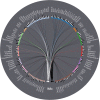Frontostriatal network dysfunction as a domain-general mechanism underlying phantom perception
- PMID: 30648324
- PMCID: PMC6865744
- DOI: 10.1002/hbm.24521
Frontostriatal network dysfunction as a domain-general mechanism underlying phantom perception
Abstract
In the present study, we use resting state fMRI to investigate whether nucleus accumbens (NAc) and extended frontostriatal networks are involved in the pathology of auditory phantom perception, i.e., tinnitus, through a study of functional connectivity. We hypothesize that resting state functional connectivity involving NAc will be increased relative to what is observed in healthy subjects and that this connectivity will correlate with clinical measures of tinnitus such as percept loudness, duration of symptoms, etc. We show that a large sample of patients with chronic tinnitus (n = 90) features extensive functional connectivity involving NAc that is largely absent in healthy subjects (n = 94). We further show that connectivity involving NAc correlates significantly with tinnitus percept loudness and the duration of tinnitus symptoms, even after controlling for the effects of age and hearing loss. The loudness correlation, which involves NAc and parahippocampal cortex, is consistent with existing literature identifying the parahippocampus as a tinnitus generator. Our results further suggest that frontostriatal connectivity may predict the transition from acute to chronic tinnitus, analogous to what is seen in the pain literature. We discuss these ideas and suggest fruitful avenues for future research.
Keywords: connectivity; fMRI; nucleus accumbens; pain; phantom perception; tinnitus.
© 2019 Wiley Periodicals, Inc.
Conflict of interest statement
The authors declare no competing financial interests.
Figures






References
-
- Baliki, M. N. , Chialvo, D. R. , Geha, P. Y. , Levy, R. M. , Harden, R. N. , Parrish, T. B. , & Apkarian, A. V. (2006). Chronic pain and the emotional brain: Specific brain activity associated with spontaneous fluctuations of intensity of chronic back pain. The Journal of Neuroscience, 26, 12165–12173. - PMC - PubMed
Publication types
MeSH terms
Grants and funding
LinkOut - more resources
Full Text Sources
Medical

